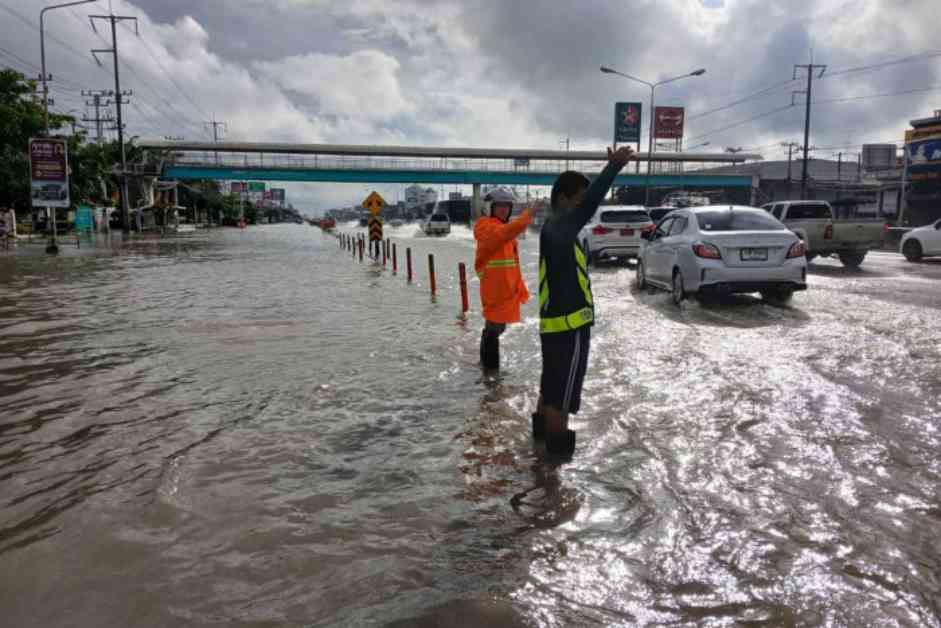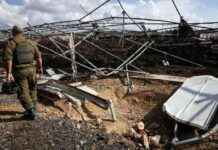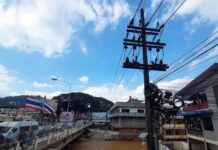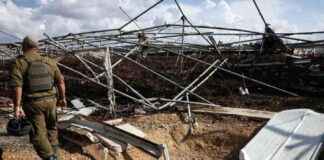Persistent Flooding in 5 Thai Provinces: Updates and Solutions
Officials were seen guiding motorists through the flooded Phetkasem Highway in Muang district of Nakhon Pathom on a Sunday morning. The Department of Disaster Prevention and Mitigation provided updates on the persistent flooding situation in five provinces, mainly in the Central Plains, with some positive news of declining flood levels on Sunday.
As reported by the department, flooding continued to impact Ayutthaya, Lamphun, Nakhon Pathom, Suphan Buri, and Uthai Thani, affecting over 31,500 families living in more than 770 villages. In Lamphun’s Muang district, nine villages were still dealing with floods, but there was a sign of relief as the water levels were receding. Meanwhile, in Uthai Thani’s Ban Rai district, about 20 villages experienced a flash flood, adding to the challenges faced by the residents.
Suphan Buri also faced the brunt of the flooding, with 109 villages inundated in Bang Pla Ma and Song Phi Nong districts. However, there was a glimmer of hope as flood levels were on the decline in the area. Similarly, in Ayutthaya, 598 villages in various districts like Bang Ban, Bang Pa-in, Bang Pahan, Bang Sai, Phak Hai, Phra Nakhon Sri Ayutthaya, and Sena were submerged, but the water levels were gradually receding, providing some relief to the affected communities.
Nakhon Pathom, with floodwater lingering in 40 villages in Bang Len and Nakhon Chaisri districts, also saw signs of improvement as the water started to recede. It is essential to note that Ayutthaya, Nakhon Pathom, Suphan Buri, and Uthai Thani are all located in the Central Plains region, making them particularly vulnerable to flooding during the rainy season.
The devastating impact of the floods from August 16 to October 20 was evident, with 47 provinces bearing the brunt of the natural disaster. Tragically, 57 people lost their lives, and 28 others sustained injuries during this period. The floods disrupted the lives of approximately 256,400 families across the affected regions, highlighting the urgent need for sustainable solutions to address the recurring issue of flooding in Thailand.
In response to the ongoing crisis, local authorities and disaster management agencies have been actively involved in providing relief efforts and ensuring the safety of the affected populations. The coordination between government agencies, community leaders, and volunteers has been instrumental in mitigating the impact of the floods and supporting the affected families during these challenging times.
Moving forward, it is crucial for policymakers to focus on long-term strategies for flood prevention and management, including infrastructure development, early warning systems, and community-based disaster preparedness. By investing in resilient infrastructure and sustainable urban planning, Thailand can build a more disaster-resilient society and protect vulnerable communities from the devastating effects of recurring floods.
As the country continues to grapple with the aftermath of the recent floods, solidarity, and collective action from all stakeholders will be essential in building a more sustainable and resilient future for Thailand. By learning from past experiences and embracing innovative solutions, Thailand can overcome the challenges posed by natural disasters and emerge stronger and more prepared to face future crises.




















